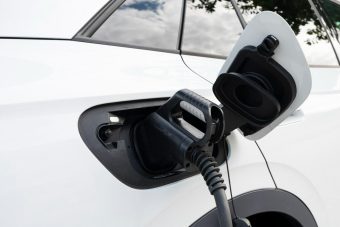A car is no longer just a means of transportation from point A to point B. For city driving, where speed is heavily limited, a model from 2005 can perform nearly as well as one from the 2020s. Today, we expect more – premium-quality tires, seat massagers, touchscreens, LED lighting, speakers with bass effects, parking sensors, sports models… All these amenities are significant solely for driver comfort, while they mostly have negative consequences for the environment. In a world where both the number of cars on the roads and the climate crisis are growing, a serious shift is needed.
Electric cars are no longer a mystery. Vehicles powered by electricity, according to experts, represent the future of transportation if we want to preserve air quality, halt climate change, and improve the health of people and the planet. However, transitioning to electric vehicles is not an easy or appealing decision for many. First and foremost, they are often more expensive than traditional combustion engine cars, and although awareness of environmental issues is growing, many drivers are still not eco-conscious enough to invest in a vehicle that reduces harmful emissions.
Even if this issue were resolved through government subsidies, incentives, and educational campaigns, there remains a critical question without which everything else loses meaning – the development of infrastructure. Without a sufficient number of charging stations, particularly on longer routes, drivers face concerns about whether they will be able to recharge their vehicle without disrupting their travel plans. This uncertainty deters many potential buyers, as a reliable and accessible charging network is essential for the widespread adoption of electric cars.
Although electric vehicles are not yet widely accepted in Serbia, it is important to note that the country is a significant transit hub, which further emphasizes the need for investment in infrastructure development. Awareness of the transition to sustainable transport is steadily growing in Serbia, but it must be supported by increasing the number of charging stations for electric vehicles.

As one of the leading players in this field, the company Charge&GO is dedicated to ensuring that the charging network is reliable, accessible, and tailored to the needs of users. The company is developing infrastructure not only in urban areas but also in less developed regions of Serbia.
Their charging network includes slow chargers with a capacity of 22 kW, as well as one of the most powerful chargers in the country, a DC charger with a capacity of 240 kW, which allows for ultra-fast charging.
In addition to enabling the charging of electric vehicles in Serbia, Charge&GO also supports users traveling abroad. The company has modernized its website, providing users with easier access to information about charger locations and available services. Through the Charge&GO app, users can easily find their desired charger on the map, check its availability, power, connector type, and charging price. The app offers access to a network of over 400,000 chargers across Europe, thanks to integration with the largest e-roaming platform.
Charging is automatically billed through the app, and users can track the progress of their charging session, including the duration and battery status. The app also provides a detailed overview of charging history and payments. Support is available 24 hours a day, and with an RFID card, charging sessions can be started with just a tap on the charger’s reader.
The development of electric vehicle infrastructure is the foundation for the future of sustainable mobility in Serbia. Projects like those implemented by Charge&GO enable drivers to confidently use electric vehicles, both domestically and abroad.

